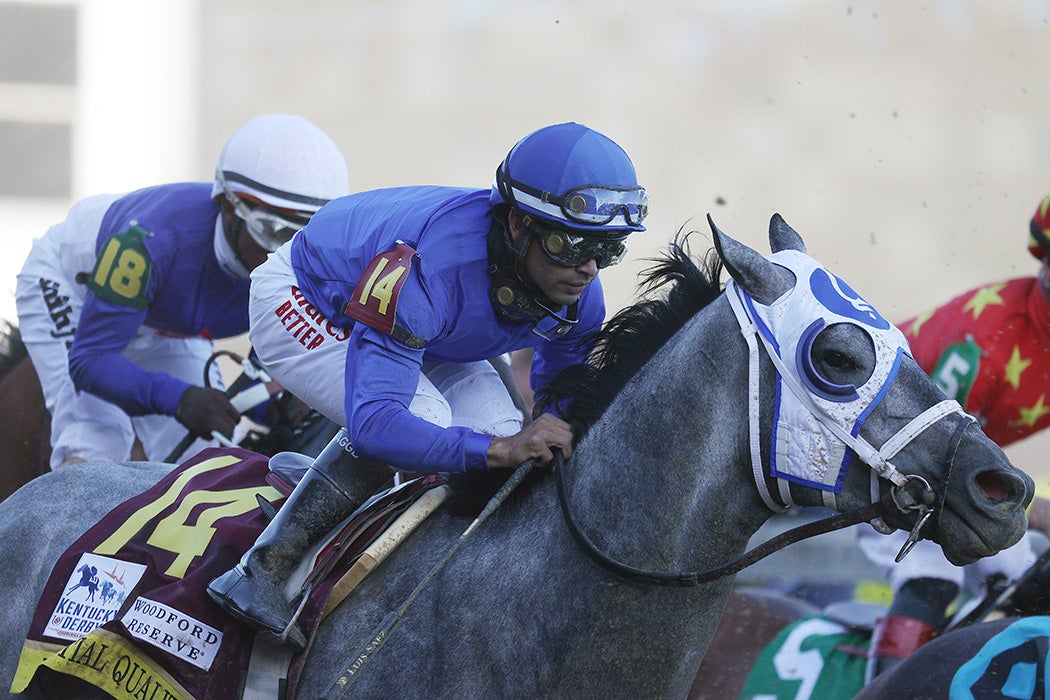On May 1, 2021, the three-year-old gray colt Essential Quality was set as the favorite to win the Kentucky Derby, following an undefeated 2020 season. As he thundered over the finish line, neck-in-neck for fourth place, bettors banking on him to win lost all their money. Those who bet on longshots Medina Spirit and Mandaloun for the win gained $26.20 and $23.00 for every dollar wagered, respectively. Medina Spirit failed a drug test shortly after his win and was ultimately disqualified, but the bets won on him that day (and lost on Essential Quality) were left standing.
Racetrack betting in the United States predominately operates on a system called pari-mutuel, in which all bets are aggregated into a pool of money to be distributed among the winners at the conclusion of the race, with the house taking a small percentage off the top. To determine on which horses to place their wagers, most racegoers look at the odds—these represent the public opinion on the likelihood of winning for each horse. More directly, odds are the payout for each horse, calculated by the amount of money that has been wagered on them.
Low or short odds mean that the horse has a lot of money wagered on it to win (i.e., a favorite), while high or long odds mean less money has been wagered on it to win (i.e., a longshot). Although a professional will determine predicted “morning odds” before the race, the odds will continually change as bettors chance their money, and final odds or payouts will only be calculated after the finish of the race. Ultimately, favorites are generally considered to have a higher chance of winning, but longshots will have a higher payout if they win.
In 1949, R. M. Griffith first recorded a betting pattern now termed the “favorite-longshot bias,” which concludes that favorites are undervalued by bettors and longshots are overvalued. Although more overall money is wagered on favorites, the proportion of money wagered on longshots is consistently higher than expected. This pattern has been confirmed and replicated over the years, leading many researchers to conclude that bettors are attracted to risk. By backing longshots, they’re making wagers with low average returns and high variance, or many possible outcomes—they may gain a high payout, but it’s more likely that they’ll lose their money. As with many other types of gambling, bettors are thought to be drawn to the risk and uncertainty of these bets.
Other researchers have suggested that horse race gamblers are not necessarily risk lovers, but rather, that they prefer positive skewness. In statistics, skewness refers to a lopsided distribution of the data, rather than a bell curve—in economics, positive skew indicates that an investor may incur frequent small losses alongside much rarer large wins. At the racetrack, betting on longshots may lead to small losses, but these losses could be recovered or offset by huge gains if the backed horses win. By placing bets on multiple longshots, bettors may improve their chances of large wins even more.
Weekly Newsletter
Yet another alternative proposes that seemingly risk-loving bettors are placing these wagers because they are operating on common statistical misconceptions. People tend to consistently ignore small differences in probabilities and generalize as if the expected outcome for either option is the same. As Erik Snowberg and Justin Wolfers point out, “The low rates of return to betting long shots are rationalized by bettors who bet as though horses with tiny probabilities of winning actually have moderate probabilities of winning.”
Perhaps some bettors are attracted to risk, others are consciously or subconsciously attracted to the small chance of a large payoff, and still others believe that longshots have a higher probability of winning than they do. They may be using their own calculations to determine where to place their money, but there’s no way to know whether a favorite will keep the glory or a longshot will overcome all odds to become the new champion. On the start line of this year’s Kentucky Derby, horses Zandon and Epicenter are predicted as favorites, with longshots Summer is Tomorrow and Tiz the Bomb expected to fall behind. Where will you be placing your bet?
Support JSTOR Daily! Join our new membership program on Patreon today.







